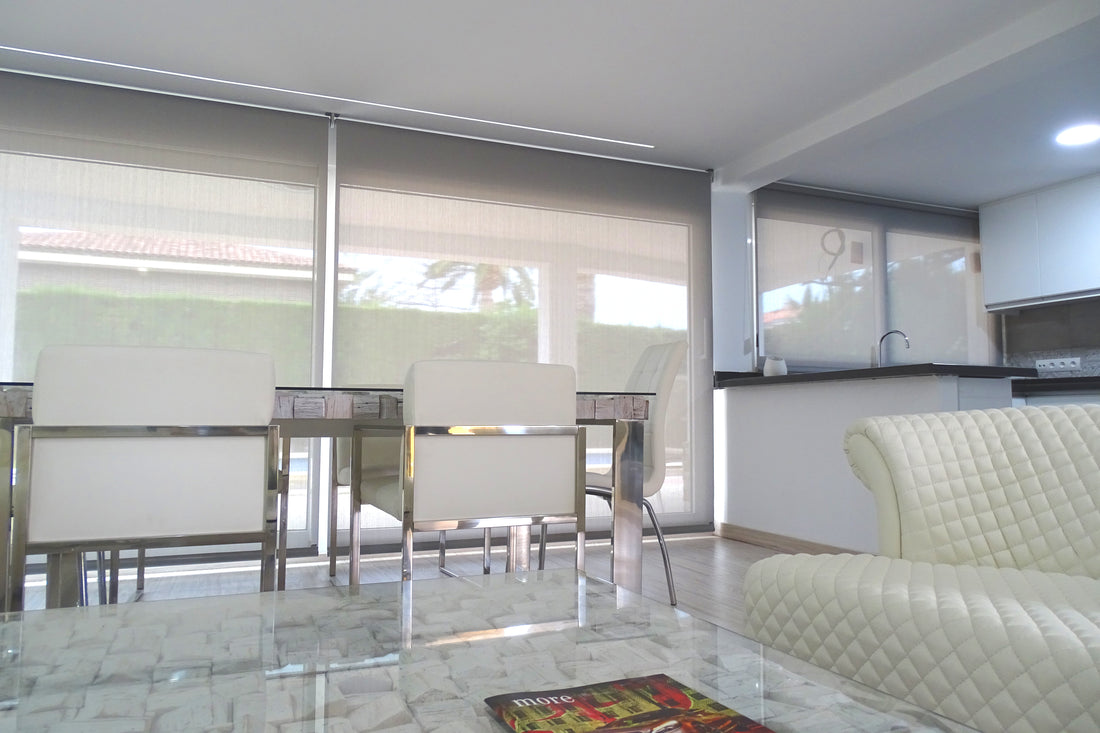
Technical fabrics: Screen and Opaque.
Compartir
Screen fabric is a type of technical fabric that is used to make roller blinds, awnings, vertical curtains and Japanese panels, among other uses. It is composed of PVC-coated polyester or fiberglass threads, which gives it great resistance and durability.

The screen fabric has several advantages that make it stand out above other fabrics:
• It allows you to regulate the entry of light and heat into the room, creating a comfortable and pleasant environment. Depending on the degree of opening of the fabric, which can vary between 1% and 10%, more or less transparency and visibility to the outside can be achieved.

• Protects furniture and floors from fading and deterioration caused by UV rays by partially or completely filtering them.
• It is easy to clean and maintain, as it is fireproof, anti-mold, and dust and water repellent. It can be cleaned with a damp cloth or vacuum cleaner.

• It is versatile and adaptable to any type of decoration and space, since you can choose from a wide range of colors, textures and finishes. In addition, it can be combined with other types of curtains or accessories to create different effects.
• It is ecological and sustainable, since it contributes to energy savings by reducing the need for artificial air conditioning. Additionally, some screen fabrics are made from recycled or recyclable materials.
In short, screen fabric is an ideal option to dress the windows of your home, since it offers functionality, design and quality in the same product.
What is the difference between screen fabrics and opaque fabrics?
The main difference between screen fabric and opaque or blackout fabric is the degree of opening, that is, the amount of light they allow to pass inside. The screen fabric has a variable aperture that can range from 1% to 10%, which means that it allows between 90% and 99% of the light to pass through. Opaque fabric, on the other hand, has no or very low opening, which means that it almost or completely blocks light.

Opaque rollers.
The screen fabric allows you to regulate the luminosity and temperature of the room, creating an effect of sifting or diffusion of light. In addition, it allows you to see the outside without being seen from inside, as long as there is more light outside than inside. The opaque fabric, for its part, creates a darkening or blackout effect, ideal for bedrooms or cinema rooms. In addition, it prevents you from seeing the outside and being seen from within.
Another difference between screen and opaque fabric is the material and finish. The screen fabric is composed of polyester or fiberglass threads coated with PVC, which gives it a smooth and uniform appearance. Opaque fabric can be made of different materials, such as polyester, cotton or linen, and have different textures and prints.
In summary, screen fabric and opaque fabric are two types of technical fabrics that are used to make roller blinds, but they have different characteristics and functions. The choice will depend on the taste and needs of each user.
